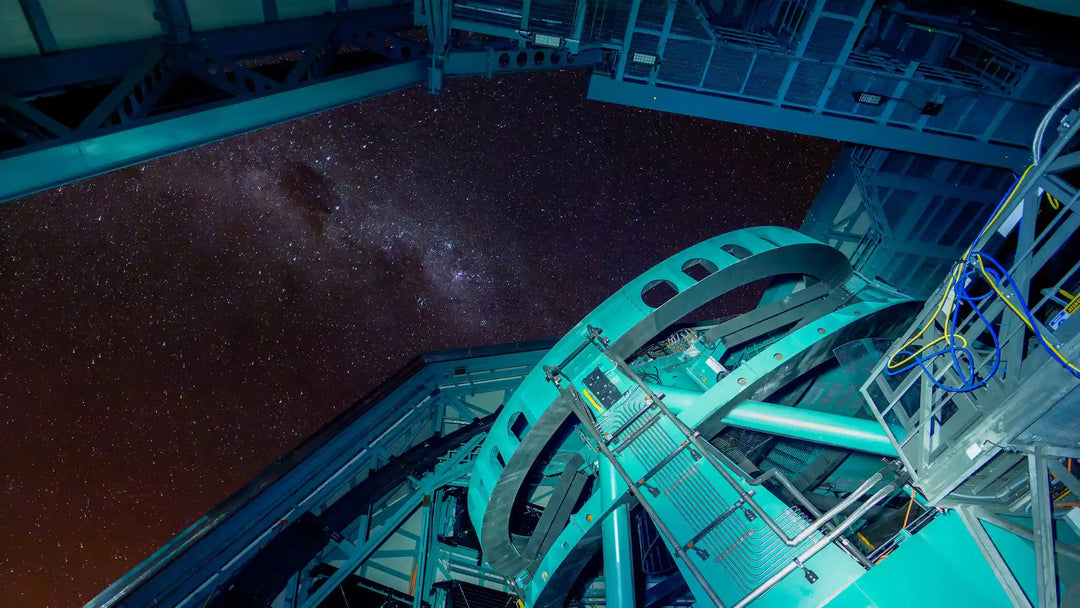James Webb Space Telescope uncovers young stars in NGC 346’s dusty ribbons

On January 11, 2023, at the 241st meeting of the American Astronomical Society in Seattle, Margaret Meixner presented early results of studying observations made by the James Webb Space Telescope (Webb or JWST). The discovery thrilled scientists involved in this case. Why NGC 346 evokes such emotions?
NGC 346: Observed region - Small Magellanic Cloud (SMC)
Small Magellanic Cloud (SMC) is one of our Milky Way’s closest neighbors, located about 200,000 light-years from our planet. This dwarf galaxy is known for containing lower quantities of metals compared to Milky Way.
Cosmic dust grains are made mostly of metal elements. Therefore, while investigating NGC 346 cluster, a region of SMC, it was expected to find low amounts of dust which additionally will be hard to detect. Meanwhile, Webb provided data showing the contrary.
The NGC 346 discovery – from dust to stars
In the process of star formation, gas and dust are gathered. They form an accretion disk that is feeding its protostar – a very young star. Gas was detected around protostars of NGC 346 earlier, but Webb’s near-infrared camera (NIRCam) has now observed “dusty ribbons” in these disks for the first time.
One of the researchers, Margaret Meixner, said they were excited when found dust around protostars. It means that NGC 346 potentially has everything needed to create rocky planetary systems, even though it contains lower concentrations of metals.
Webb's high-resolution imaging enabled the discovery of more than 33 thousand young stars embedded in the NGC 346 cluster. It turned out to be the Small Magellanic Cloud's brightest and largest star formation area. NGC 346 was probed by other telescopes in the past, but the cosmic dust was not imaged until Webb turned its near-infrared camera on it.
See more:
- The Pale Blue Dot Photo: History, Significance, and Legacy
- Pale Blue Dot Image: What About Large Format Prints like Fine Art?
- The Earthrise Photo: A Journey Through Earth’s Iconic Space Portrait
Enceladus holds potential for alien life with recent discovery of vital element
JADES-GS-z14-0: NASA's JWST Discovering the Most Distant Galaxy
Anticipating the celestial show – Betelgeuse's potential supernova event
Supernova 2020eyj: First radio signal from the massive explosion of a dying white dwarf

A peek at the Cosmic Noon
At the peak era of star formation called Cosmic Noon, billions of years ago, galaxies contained low amounts of metals. Similar conditions are found in SMC and that is the reason why astronomers decided to investigate this region.
About 2-3 billion years after the Big Bang, many regions of the galaxies were forming stars at a furious pace. Now the NGC 346 cluster is the only region of its galaxy forming stars at such a rate. And it offers a great opportunity to probe conditions similar to Cosmic Noon.
See also:
Research ahead
So far, researchers involved in studying NGC 346 were focused on protostars 5 to 8 times heavier than the mass of the Sun. Infrared images from Webb enabled studying much lighter protostars.
Astronomers can now investigate whether the process of forming those objects is altered by lower metal levels observed in Small Magellanic Cloud and if the process is different than the one in our Milky Way.
What next with NGC 346 and young stars?
Guido De Marchi (of the European Space Agency) from the research team claims that since the environment in SMC is comparable to the conditions of Cosmic Noon, there is a possibility that rocky planets were forming earlier than it was thought.
Researchers continue to analyze data on NGC 346. Margaret Meixner stated they have just started studying the data. What's more, Webb’s NIRSpec instrument provided spectroscopic observations of which the study is underway. It will shed some new light on the surroundings of the protostars and the material accreting onto them.
References
- NGC 346, Webbtelescope.org, [25.04.2024]
- Star-forming region in nebula NGC 346, ESA, [25.04.2024]
- NASA’s Webb Captures an Ethereal View of NGC 346, NASA, [26.05.2024]
- NASA’s Webb Uncovers Star Formation in Cluster’s Dusty Ribbons, NASA, [26.04.2024]
- Star cluster NGC 346 from JWST, Planetary, [26.04.2024]
- Webb captures an ethereal view of NGC 346, ESA, [26.04.2024]


![Vera C. Rubin Observatory: Revolutionizing Astronomy Through the World's Most Advanced Telescope [All You Need To Know]](http://astrography.com/cdn/shop/articles/vera-c.-rubin-observatory_main.webp?v=1751627507&width=1080)

Leave a comment